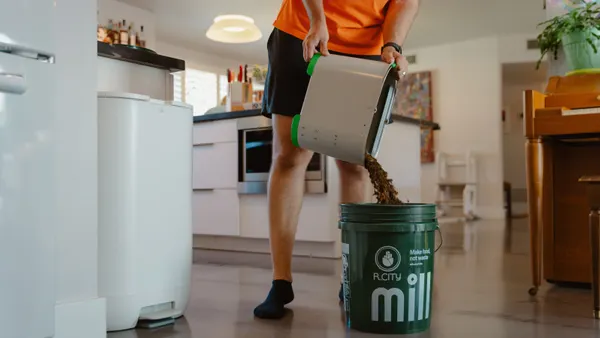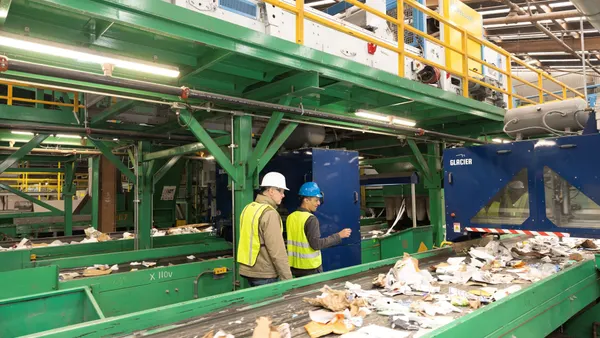UPDATE: Dec. 20, 2018: President Trump has signed the Agriculture Improvement of Act of 2018 into law.
UPDATE: Dec. 13, 2018: The Agriculture Improvement of Act of 2018 has officially been passed out of Congress by a vote of 368-47 in the House and 87-13 in the Senate.
In addition to some of the high-profile features listed below, the final text also includes multiple provisions to reduce food waste at the farm level and expand donation liability protections. The Harvard Food Law and Policy Clinic has a full breakdown of the food waste implications and is helping to track the broader bill's progress at the Farm Bill Law Enterprise website. Pending President Trump's signature, which is expected as soon as next week, the bill would mark a significant increase in funding, research and policy attention around food waste at the national level.
Dive Brief:
- A newly released conference report has set the $867 billion Agriculture Improvement Act of 2018 up for final votes in Congress as soon as this week. It still includes $25 million in annual funding for the USDA to "develop and test strategies for planning and implementing municipal compost plans and food waste reduction plans" in at least 10 states through 2023. One of the stated goals is to "divert food waste from landfills."
- The USDA will also establish a "food loss and waste reduction liaison" to work on interagency collaboration and existing programs. The agency will conduct a study on food waste that looks at measurement methodologies, contributing factors, financial costs, the effectiveness of current donation liability protections and other relevant areas.
- The bill also includes plans to establish an "Interagency Biogas Opportunities Task Force" that will focus on policies, programs and research to accelerate the growth of biogas systems. In addition, $1 million in annual funding is included for a "Carbon Utilization and Biogas Education Program" focused in part on agricultural "opportunities for aggregation of organic waste from multiple sources into a single biogas system."
Dive Insight:
Regardless of the current political tensions, this new Farm Bill text can be taken as yet another sign that addressing topics such as food waste can help mitigate the climate crisis while simultaneously presenting new economic opportunities.
As with any legislation of this size, the full nuances still need to be parsed out, and language could change before a version arrives at President Trump's desk. But barring any major surprises, it appears food waste will receive an unprecedented level of attention in this new Farm Bill. Groups such as ReFED and the Harvard Food Law and Policy Clinic have been advocating for food waste provisions for years, with the perspective that even small details would be a victory. Those efforts appear to have paid off.
While the EPA and USDA have already established a joint goal to reduce food waste 50% by 2030, progress is still in the early stages. During this summer's U.S. Food Waste Summit, representatives from both agencies shared updates on voluntary programs and other educational initiatives. At the time, one career USDA official told Waste Dive that she saw this issue as fitting well within the Trump administration's focus on farmers and domestic self-sufficiency. In October, the two agencies teamed up with the FDA to sign a new "Winning on Reducing Food Waste" agreement to further that commitment.
Despite these signs of national cooperation, many feel more needs to be done to make real progress. The UN recognized a similar need for increased action in a recent progress report on its own 2030 reduction goal.
The establishment of a new liaison position at the USDA, which will assist with the national food waste study, is seen as a positive step in that direction. Due to the current patchwork of reporting standards, liability definitions and logistical inefficiencies, there is still a significant amount of food loss and waste happening upstream. By more fully understanding the factors behind that problem, federal agencies can better direct their efforts.
Beyond that, the collective $125 million in funding for local reduction and composting programs will play a key role. The multiple biogas provisions also present a major opportunity for infrastructure expansion. A growing number of state and local governments have begun to focus on organics diversion requirements, but infrastructure for recovery or recycling is still nascent in most regions. Given that many of the waste and recycling industry's largest players are stringent with their capital spending in this area, such an influx of funding and attention could help kickstart new interest from local governments.










